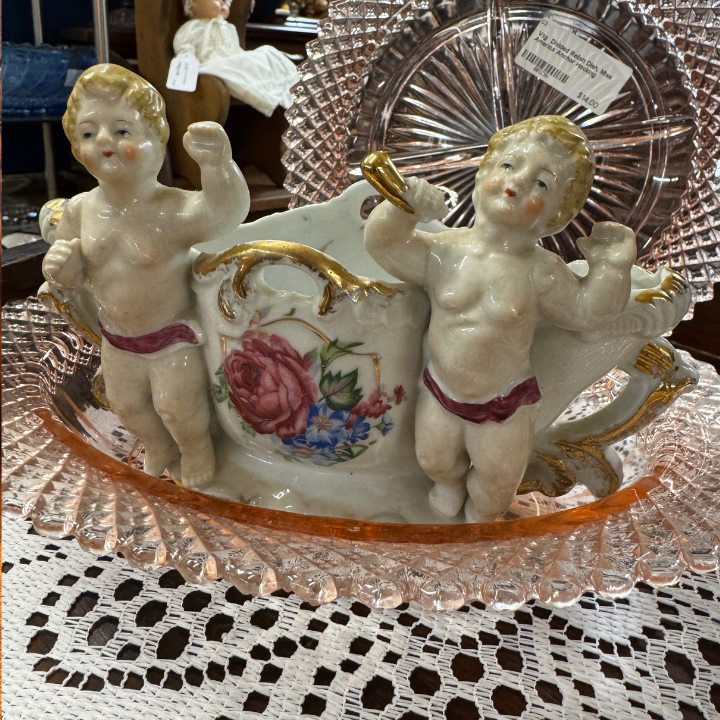Picture this: a cozy parlor in 18th-century Europe, where sunlight streams through lace curtains, glinting off delicate porcelain figurines displayed on a polished mantel. Each piece, hand-painted with exquisite detail, tells a story—perhaps a pastoral scene, a cherubic child, or a symbol of love and prosperity. These figurines were more than mere decorations; they were cherished possessions, treasured for their beauty, meaning, and status.
But what is it about porcelain figurines that captivated collectors for centuries? Let’s take a closer look at the rich history and enduring appeal of these delicate works of art.
Porcelain Figurines: A Symbol of Status and Sophistication
In the 18th century, porcelain was the epitome of luxury. European royalty and aristocrats were enamored with this “white gold,” which was first imported from China before European manufacturers like Meissen and Sèvres mastered their own techniques. Owning fine porcelain figurines became a symbol of wealth and refinement, a way to showcase one’s taste and social standing.
Figurines often depicted elegant courtly scenes, mythological figures, or pastoral vignettes, reflecting the sophisticated lifestyles and interests of their owners. Displaying these treasures in a home signaled not only affluence but also an appreciation for fine art and craftsmanship.
Sentimental Value: Figurines as Personal Keepsakes
Beyond status, porcelain figurines held deep sentimental value. They were often exchanged as gifts to mark life’s milestones—birthdays, weddings, anniversaries, or even the arrival of a new baby. Each figurine represented a special memory, becoming a tangible keepsake that could be passed down through generations.
For many families, collections of figurines tell stories of love, loss, and celebration. A delicate figurine of a dancing couple might recall a wedding day, while a playful cherub could symbolize the birth of a child. These small, intricate sculptures became cherished heirlooms, embodying the emotions and history of those who treasured them.
Artistry and Craftsmanship: The Beauty in the Details
Collectors have long been drawn to the incredible artistry and craftsmanship of porcelain figurines. Each piece is a testament to the skill of the artisans who shaped, painted, and glazed them. From the lifelike expressions to the delicate folds of clothing, these figurines capture intricate details that make them miniature masterpieces.
Different regions and manufacturers brought their own styles to the art form. Meissen porcelain, for example, is renowned for its Rococo elegance, while Royal Doulton figurines are known for their lifelike realism and rich colors. The craftsmanship behind these pieces continues to inspire admiration among collectors and art enthusiasts alike.
The Evolution of Porcelain Figurine Collecting
While porcelain figurines began as symbols of luxury, their appeal expanded over time. By the 19th and 20th centuries, figurines became more widely available, with manufacturers producing pieces that catered to middle-class collectors. Figurines depicting everyday scenes—children at play, animals, and seasonal motifs—became popular, allowing more people to enjoy the beauty of porcelain in their homes.
Even today, porcelain figurines remain beloved collectibles. Whether displayed in a glass cabinet, gifted for special occasions, or passed down as family heirlooms, these delicate sculptures continue to captivate with their timeless charm.
Incorporating Porcelain Figurines into Modern Decor
While traditionally displayed on mantels and shelves, porcelain figurines can add a unique touch to contemporary interiors as well. Here are a few creative ways to incorporate them into your home:
- Eclectic Displays: Mix vintage figurines with modern decor for a playful contrast. A sleek, minimalist shelf adorned with a few delicate figurines can create a striking focal point.
- Table Centerpieces: Use figurines as part of a table setting for special occasions. A collection of floral or seasonal figurines can add charm and elegance to your dining experience.
- Gallery Walls: Combine framed art with wall-mounted shelves to display figurines as part of a larger art arrangement.
Why Do We Still Love Porcelain Figurines?
The enduring appeal of porcelain figurines lies in their blend of beauty, history, and emotion. They are more than just decorative objects—they are storytellers, heirlooms, and symbols of artistry. Whether treasured for their craftsmanship, sentimental value, or historical significance, porcelain figurines continue to enchant collectors and decorators alike.
So, the next time you see a porcelain figurine, take a moment to appreciate the history and craftsmanship behind it. You might just find yourself starting a collection of your own.
Do you have a favorite porcelain figurine? Share your story in the comments below!




